Slavery & Emancipation
Selected to emphasize the lack of freedom of movement associated with slavery is a broadside dated at St. Louis, August 23, 1852,
advertising rewards from slave owners for the return of their runaway slaves: all men, identified by their first name, age,
physical build and
condition..jpg) All, it might be hoped, made it to the "Underground Railway".
All, it might be hoped, made it to the "Underground Railway".
.jpg) All, it might be hoped, made it to the "Underground Railway".
All, it might be hoped, made it to the "Underground Railway".
A rare bill of sale dated at Charleston, November 29, 1856 in the State of South Carolina, of a "brown girl named Mary warranted sound,"
for $820.
At left is a letter dated August 11, 1835, from A.G. Mills, quibbling over the price of slaves in Virginia
because he wishes to purchase forty hands between the ages of thirteen and twenty-five, plus twenty efficient field
hands.
In like manner are the advertisements for slaves posted by C. E. Girardey &
Co. ,
January 18, 1859, and N.
Vignie
,
January 18, 1859, and N.
Vignie ,
February 18, 1859, in New Orleans.
,
February 18, 1859, in New Orleans.
Examples of abolitionist literature published in pamphlet form are the 1855 publications titled Letters on Slavery
Addressed to the Pro-Slavery Men of America,25 in which the author sets out the immoral and destructive nature of the practice.
In The Matter of George Gordon's Petition for Pardon,26 the Reverend George Gordon, a member of the secessionist Free
Presbyterian Church, which had separated from the Presbyterian Church of the United States because of the latter's stance on slavery,
had been charged with interfering in the apprehension and arrest of the slave, Grandison Martin, a fugitive from
Kentucky. Gordon, who had been convicted in Cincinnati in November 1861, sentenced to prison and fined, claimed he did not want
a pardon because he was not guilty of anything since he considered the Fugitive Slave Laws as unconstitutional.
The pamphlet is a legal examination of Gordon's constitutional claims, and thereby the Fugitive Slave Laws themselves.
Gordon, who had been convicted in Cincinnati in November 1861, sentenced to prison and fined, claimed he did not want
a pardon because he was not guilty of anything since he considered the Fugitive Slave Laws as unconstitutional.
The pamphlet is a legal examination of Gordon's constitutional claims, and thereby the Fugitive Slave Laws themselves.
To commemorate the Emancipation Proclamation, Currier and Ives issued a coloured print titled "Freedom to the
Slaves".jpg) in which Lincoln is portrayed in a quasi-biblical stance, the caption, in fact, quoting scripture: "Proclaim liberty throughout the land
unto all the inhabitants thereof."27 Former slaves unashamedly did abase themselves before the President at which point
Lincoln himself would raise the person with the caution that he kneel to no one but God.
in which Lincoln is portrayed in a quasi-biblical stance, the caption, in fact, quoting scripture: "Proclaim liberty throughout the land
unto all the inhabitants thereof."27 Former slaves unashamedly did abase themselves before the President at which point
Lincoln himself would raise the person with the caution that he kneel to no one but God.
25. Edward Coit Rogers, Letters on Slavery, Addressed to the Pro-Slavery Men of America; Showing its Illegality in all Ages and Nations:
Its Destructive War upon Society and Government, Morals and Religion. Boston: B. Marsh, 1855.
26. John Jolliffe, In The Matter of George Gordon's Petition for Pardon. Cincinnati: Gazette Company Steam Printing House, 1862.
27. Bible. Leviticus: XXV: 10.

Lincoln reads the Emancipation Proclamation to his Cabinet: Stanton, Chase, Wells, Seward, Smith, Blair and Bates.
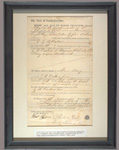
Slave Bill of Sale

Choice Slaves at Auction
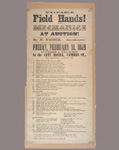
Valuable Field Hands
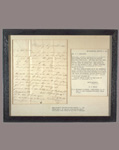
Price of Slaves
.jpg)
Reward Notice

Emancipation Proclamation. New York Historical Society.

A Proclamation
.jpg)
Freedom to the Slaves - 1863
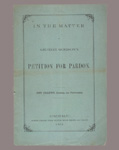
In the Matter of George Gorden's Petition for Pardon
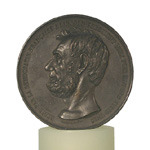
Coin - French

Coin - For A Further Unification of the People